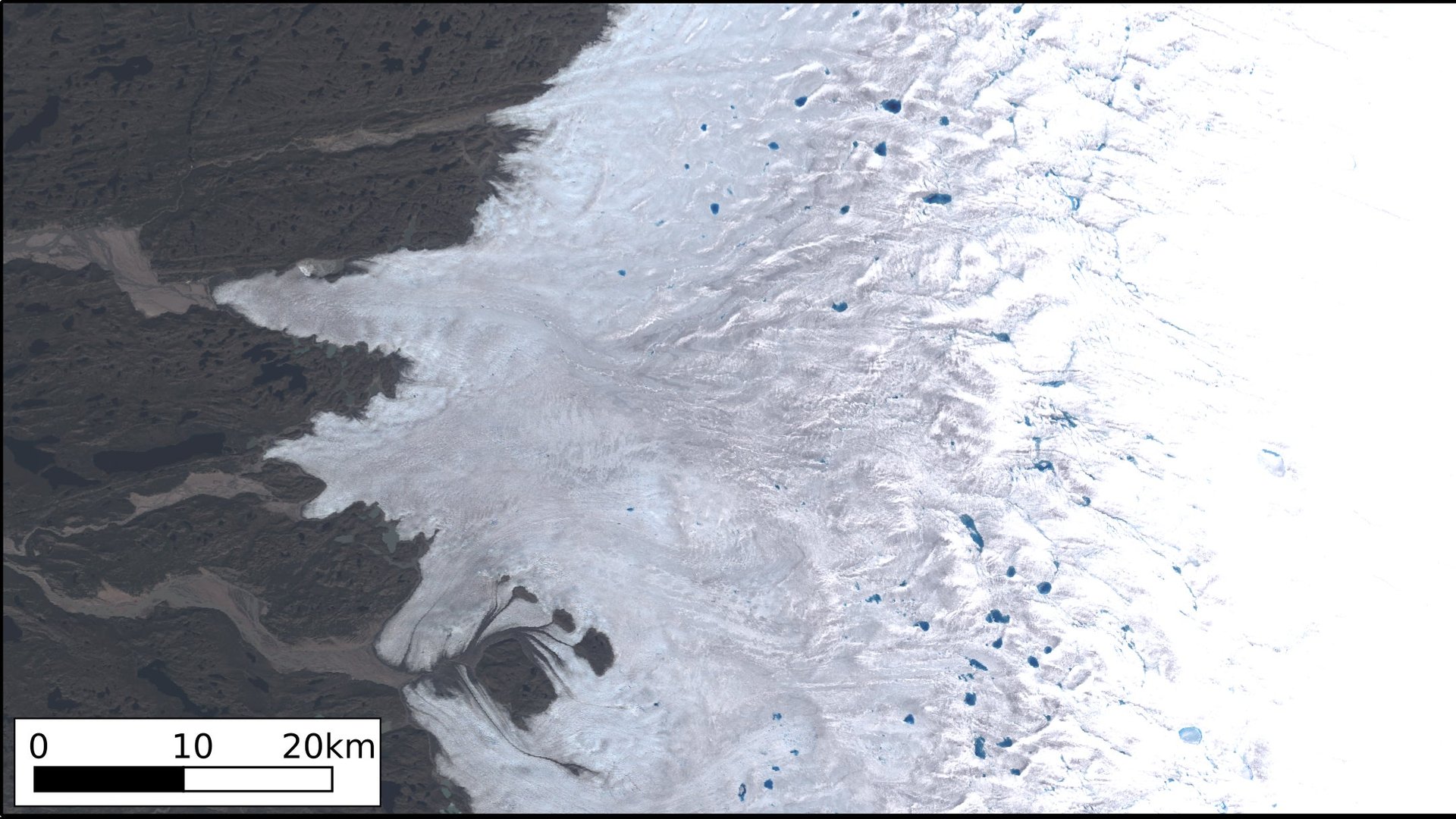Where snow stops and starts on Greenland Ice Sheet is a hidden key to understanding its melt
Right now, about 25% of all sea level rise comes from the melting Greenland ice sheet. That means every variable that affects the sheet’s melting is critically important to understanding how much sea levels could rise in the near future. But ice sheets are dynamic systems; the factors that affect their melting are numerous, and often subtle.


Right now, about 25% of all sea level rise comes from the melting Greenland ice sheet. That means every variable that affects the sheet’s melting is critically important to understanding how much sea levels could rise in the near future. But ice sheets are dynamic systems; the factors that affect their melting are numerous, and often subtle.
In a paper published today in the journal Science Advances, researchers zero in on one critical factor: The movement of the snowline, where snow stops and starts on the ice sheet, plays a major role in how quickly the ice melts, they have found.
This makes intuitive sense: Snow-covered ice is bright white, while bare ice is darker; white reflects light and heat from the sun, while darker colors absorb it. When the snowline is in a different place on the ice, it leaves more or less of the dark ice exposed to the sun. Using data from NASA satellites, the researchers found that the position of the snowline often changed dramatically year to year, and its position determined more than half, 53%, of the changes in how much of the sun’s light and heat the ice absorbed.
“This study shows for the first time that this simple partitioning between bare ice and snow matters more when it comes to melting than a whole host of other processes that receive more attention,” Laurence Smith, an Arctic remote sensing expert and visiting professor at the Institute at Brown for Environment and Society who co-authored the study said in a statement.
This discovery has the potential to improve models used for future projections of ice melting and sea level rise, because until now researchers working on the Greenland ice sheet haven’t factored precise snowline measurements into their models. That’s a big factor to neglect. Researchers have spent a lot of time investigating how pooling water, layers of dirt and soot, and the growth of algae can darken the bare ice, leading it to absorb more of the sun’s energy, which triggers melt. But the simple change in location of the snowline actually affects the solar energy absorption of ice five times more than any of those factors.
“We found that models don’t reproduce snowlines very well, which adds an uncertainty to future projections,” Jonathan Ryan, a glaciologist at Brown and the lead author of the study, said. “But now that we’ve shown how important the snowline effect is, and have some direct observations of snowline positions, hopefully we can improve these models going forward.”